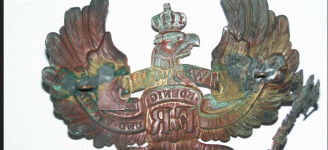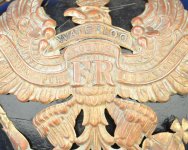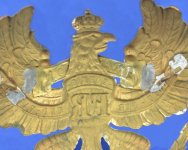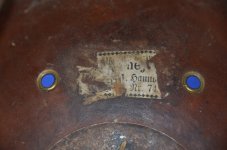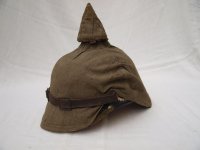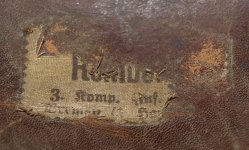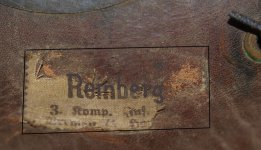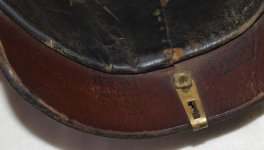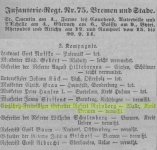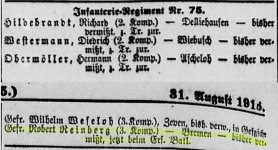Sandmann
Well-known member
Dear fellow collector friends,
I‘m happy to show you my latest addition to my collection, a beautiful enlisted men helmet M1895 from the Infantry Regiment (1st Hanoverian) No. 74.

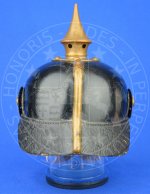
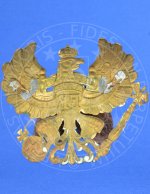
The M91 rosettes measure 14.0 mm in diameter and have only a single pin to prevent twisting. This fits perfectly with the date of manufacture of 1897, as stamped on the helmet. Although the clothing regulations of that time prescribed a rosette diameter of merely 13.0 mm, measurements by some collector friends, whom I ask to measure early M91 rosettes, show that the diameters were often larger than prescribed. Since the clothing regulations of 1903, the M91 rosettes were finally to be 14.0 mm in diameter and 2 pins to prevent twisting were prescribed.
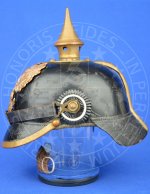

The helmet was delivered in 1897 and then stored for the time being. According to the stamped markings, it was handed out to a soldier of the 6th Company of the 2nd Battalion in 1899, as part of the primary equipment set. It‘s probable that the "Waterloo" banner was soldered on before this hand out, as this was awarded to the IR74 by AKO on January 24, 1899.
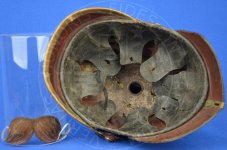
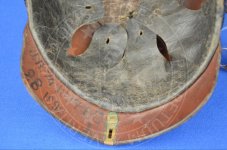
All fittings are made from aluminum bronze, as it is correct for infantry helmets since introduction of the M1895. The alloy can be recognized by its characteristic reddish color. The eagle emblem was also fire-gilded.
Specifications of this Pickelhaube:
I‘m happy to show you my latest addition to my collection, a beautiful enlisted men helmet M1895 from the Infantry Regiment (1st Hanoverian) No. 74.



The M91 rosettes measure 14.0 mm in diameter and have only a single pin to prevent twisting. This fits perfectly with the date of manufacture of 1897, as stamped on the helmet. Although the clothing regulations of that time prescribed a rosette diameter of merely 13.0 mm, measurements by some collector friends, whom I ask to measure early M91 rosettes, show that the diameters were often larger than prescribed. Since the clothing regulations of 1903, the M91 rosettes were finally to be 14.0 mm in diameter and 2 pins to prevent twisting were prescribed.


The helmet was delivered in 1897 and then stored for the time being. According to the stamped markings, it was handed out to a soldier of the 6th Company of the 2nd Battalion in 1899, as part of the primary equipment set. It‘s probable that the "Waterloo" banner was soldered on before this hand out, as this was awarded to the IR74 by AKO on January 24, 1899.


All fittings are made from aluminum bronze, as it is correct for infantry helmets since introduction of the M1895. The alloy can be recognized by its characteristic reddish color. The eagle emblem was also fire-gilded.
Specifications of this Pickelhaube:
- Overall height (including spike): 21.5 cm
- Shell height: 9.5 cm
- Spike height: 8.7 cm
- Diameter of the spikebase plate: 7.6 cm
- Diameter of blackened metal disc inside the helmet: 9.5 cm
- Front visor height: 4.0 cm
- Rear visor height: 4.3 cm
- Dimensions of the eagle plate (measured with a tape measure): 11.0 cm (H) x 14.0 cm (W)
- Chinstrap width: 1.6 cm
- Dimensions of brass eyelets on the chinstrap: 3.8 cm x 2.2 cm x 0.2 cm
- M91 rosettes with a diameter of 1.4 cm and only 1 pin to prevent twisting (early design of the M91 rosettes)
- Diameter of the cockades: 4.7 cm
- Liner with 8 flaps (according to the regulations it should be 9 flaps, but deviations from this happened)
- Weight of the helmet: 384 g
- Stamps: 1897 - I.R.74 - 2B - 1899 - 6C - I
Last edited:

